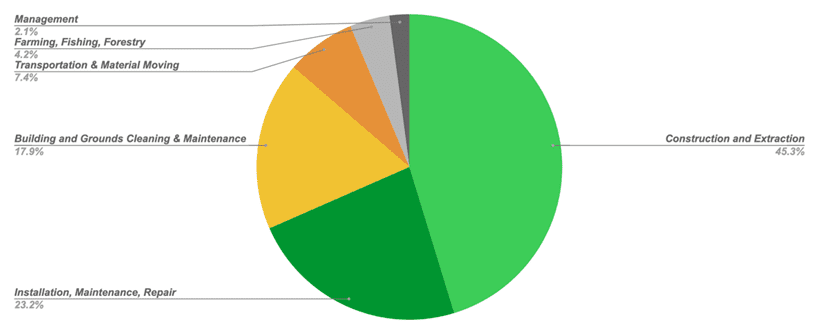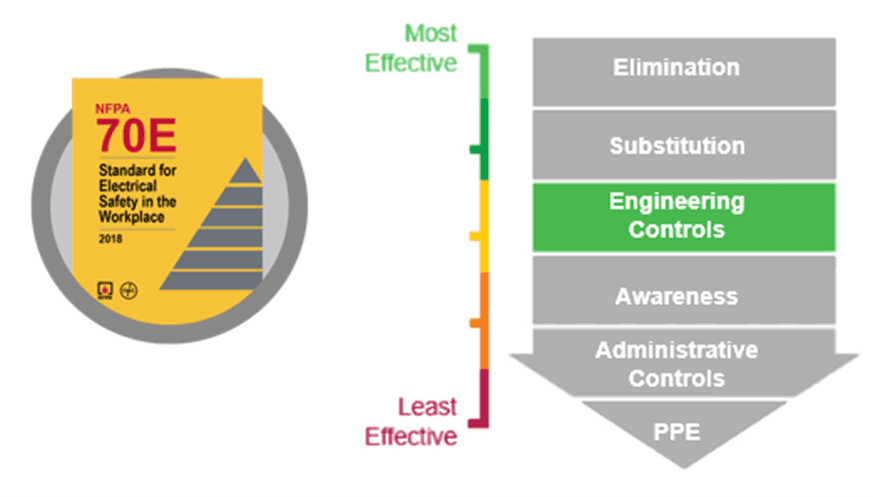Arc Flash. If your work exposes you to electrical equipment, few terms will gain your attention more quickly. The sudden, explosive release of electrical and thermal energy, including toxic smoke and plasma released from an arc flash event, can change lives in milliseconds. Electrical workers on the equipment floor bear the brunt of the risks … and impacts.
Electrical engineers understand arc flash hazards and work to design solutions that reduce the risk. In support, code makers develop guidelines and standards to provide practical, accurate guidance based on technical expertise and research. Electrical inspectors and facility managers work to ensure their implementation. All these efforts are aligned with one common goal: at the end of the day, everyone has a right to return safely home to their loved ones.

Electrical Fatalities by Occupation: Construction and service personnel are the largest categories. (Source: Electrical Safety Foundation- Workplace Injuries and Fatality Statistics)
However, the frequency and cause of arc flash hazards are surprisingly difficult to quantify. Yet new information offers a pathway to better understand the scope, which is an important first step to achieving better outcomes. Johns Hopkins University PhD candidate Qi Tong and Professor Thomas Gernay recently published an in-depth study. Their report, Arc Flash Incidents in Non-Residential Buildings: Data Analysis, offers a tangible understanding of the frequency and severity of arc flash incidents.
An Evidence-Based Approach
Underestimating the power of arc flash threatens not just physical harm but also operational losses, damaged business reputations, and lost trust. Electrical hazards are generally comprised of either arc flash or electric shock. To better gauge the frequency and impact of arc flash incidents, Johns Hopkins assessed electrical incident data from 2010 to 2020. It found that the U.S. Bureau of Labor Statistics recorded 26,480 occupational electrical incidents of all types, but only 1,386 cases with injuries were reported to the U.S. Occupational Safety and Health Administration (OSHA). Johns Hopkins applied the resulting 19:1 ratio to the OSHA injury number to estimate that 630 arc flash injuries occur annually. This key insight underscores an urgent need to implement additional measures to foster a working environment that focuses on further reducing risk for electrical workers.
Risk Management and Arc Flash Prevention
Much has been done to identify, understand, and mitigate electrical hazards and the associated risks. Standards and regulations already require employers to (1) assess workplace electrical hazards, (2) address those risks by eliminating or reducing them, and (3) implement risk reduction strategies for those hazards that remain. NFPA 70E: Electrical Safety in the Workplace offers a hierarchy of risk control methods, including Elimination, Substitution, Engineering Controls, Awareness, Administrative Controls, and Personal Protective Equipment (PPE). Many of the design solutions rely on different types of Engineering Controls, which generally lower the risk using one of the following approaches:
- Reduction: Lowering an electrical hazard level such as limiting energy exposure by reducing device clearing time.
- Avoidance: Limiting personnel access to the vicinity of the hazard, but the electrical hazard remains unaffected.
- Prevention – Reducing the likelihood of an electrical incident without necessarily altering the severity levels of the electrical hazard.
- Containment – Effectively containing and redirecting the electrical hazard and its by-products away from personnel.

The NFPA 70E approach to electrical risk mitigation is well-known to electrical professionals.
However, before you can fix a problem, you need to be able to identify the problem, and the Johns Hopkins study may shed new light on an underreported phenomenon. So, how do organizations address this issue? The first step to improving arc flash safety is understanding the true scope of arc flash incidents. The second step is to understand that the nature of, and thresholds for, reported incidents vary across the agencies that track them. And therein lies opportunity.
A Path Forward
Developing a more uniform reporting process for recording arc flash risks is essential to fully understand their frequency and identify opportunities for reducing them. Compiling comparable data from the sources that report them is a prerequisite to accurately assessing the most important reasons for arc flash occurrence. When arc flash is even better understood, the most favorable approaches can be implemented to get electrical workers home safely.
“Ensuring safety is not just a duty; it’s a fundamental right of everyone in the workplace. We must collectively uphold this right to foster a secure and thriving environment for all.” Says Antonio Di Vaira, Senior Vice President for Power Products in North America. “Sustainable progress lies in consistent collaboration among engineers, contractors, facility managers, code-makers, and regulators to advance technology, increase awareness, and refine requirements. Together, we can make a difference and ensure that each day ends as safely as it begins.”
What You Can Do
There are several actions that electrical professionals can take now to help improve arc flash safety:
- Learn more about the frequency and impact of arc flash events by reading the Johns Hopkins study. The Gernay-Tong report can be viewed on this Johns Hopkins webpage.
- Review key arc flash and electrical safety research already published (see below).
- Support arc flash safety improvements across the industry by participating in initiatives within your organization, as well as those of professional associations and code-making agencies.
- Discover best practices and solutions for arc flash protection and safety.
Only by accurately identifying the hazards, understanding the frequency of incidents, and implementing solutions to reduce their likelihood and severity can we do our part to help electrical workers return home in the same condition they arrived at work – every day.
Access Additional Arc Flash Information
Qi Tong and Thomas Gernay, “Arc Flash Incidents in Non-Residential Buildings: Data Analysis,” Johns Hopkins University, Apr. 2024. Available: https://jscholarship.library.jhu.edu/items/92008351-c328-4a84-937f-28de3be137dd
R. H. Lee, “The Other Electrical Hazard: Electric Arc Blast Burns,” in IEEE Transactions on Industry Applications, vol. IA-18, no. 3, pp. 246-251, May 1982, doi: 10.1109/TIA.1982.4504068. Available: https://ieeexplore.ieee.org/document/4504068.
C. M. Wellman, “OSHA Arc-Flash Injury Data Analysis,” 2012 IEEE IAS Electrical Safety Workshop, Daytona Beach, FL, USA, 2012, pp. 1-5, doi: 10.1109/ESW.2012.6165547. Available: https://ieeexplore.ieee.org/document/6165547
Richard B. Campbell, ScD., and David A. Dini, P.E., “Occupational Injuries From Electrical Shock and Arc Flash Events”, Fire Protection Research Foundation, Quincy, MA, USA, Mar. 2015. Available: https://www.nfpa.org/education-and-research/research/fire-protection-research-foundation/projects-and-reports/occupational-injuries-from-electrical-shock-and-arc-flash-events
“Knowledge Makes All The Difference In Arc Flash Mitigation,” Schneider Electric, 2020. Available: https://download.schneider-electric.com/files?p_Doc_Ref=998-20960073_GMA-U.S&p_enDocType=Brochure&p_File_Name=MVLV+Editorial+Article+F_1-21.pdf




Add a comment